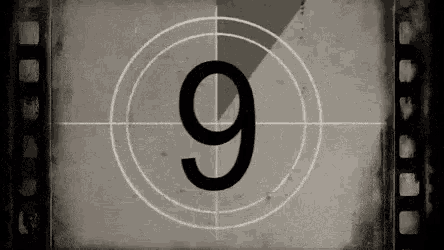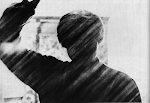Revisiting The Manchurian Candidate, (1962 & 2004)By Steve Evans Opening Shot
Opening ShotDirector Jonathan Demme defies expectations by delivering a top-notch thriller, updated to reflect contemporary paranoia. His film is a worthy companion piece to the classic 1962 original directed by John Frankenheimer, the grand master of cinematic intrigue.
A Bit of Plot…During the Gulf War, members of a platoon led by Captain Bennett Marco (Denzel Washington) and Sgt. Raymond Shaw (Liev Schreiber,
The Sum of All Fears) are kidnapped and brainwashed. With no memory of their ordeal, the soldiers return to U.S. forces. Shaw is awarded the Congressional Medal of Honor. A decade later, now-Congressman Shaw mounts his vice presidential campaign under the oppressive tutelage of his mother Eleanor Shaw (Meryl Streep), a powerful U.S. senator and right-wing ideologue.
The Shaw campaign warchest is underwritten by Manchurian Global, a secretive equity fund focused on military contracts.

Marco and other members of his old platoon gradually recall details of their kidnapping, including murders and a mammoth cover-up extending to the highest reaches of political power in the United States. Vowing to uncover the truth, Marco must first convince Shaw that the would-be vice president is actually a programmed killing machine waiting to be set in motion by unknown controllers.
Historical Context and Significance 
Learning of this production a year before its theatrical release in August 2004, I was predisposed to loathe Director Jonathan Demme’s
The Manchurian Candidate as another ill-conceived remake from the artistically bankrupt rubes who rule Hollywood. How could they improve on perfection? The late John Frankenheimer’s original
Manchurian Candidate (1962) remains the ultimate political thriller; a pungent satire redolent with cold-war paranoia. Years ahead of its time, the original works superbly on multiple levels — as thriller, mystery, political satire, even as comedy if you’re paying attention. It is a poignant exploration of the psychosis produced by brainwashing, torture, and the psychological manipulations of a dysfunctional family, which may be the most devastating mind control of all.

Frankenheimer’s direction reflects the artistic sensibility of a profoundly intelligent man working at the height of his creative powers. Sadly, Frankenheimer would never again scrape the stratospheric heights of excellence that he reached in 1962 with this film, powered by a dream cast of Frank Sinatra as Bennett Marco and Lawrence Harvey as the programmed assassin Raymond Shaw. With screenwriter George Axelrod (who adapted Richard Condon’s 1959 novel), these men produced “the most poundingly suspenseful political thriller ever made” according to People Magazine. No argument here.
Dr. Strangelove, Stanley Kubrick’s incredible satire of nuclear madness, is the lone film that even approximates the scabrous socio-political commentary of
The Manchurian Candidate. Both were made within two years of each other.
Frankenheimer’s masterpiece mocks the far right as red-baiting dupes angling for any excuse to seize power. The film likewise ridicules the liberal left as flaccid and ineffectual. The great director once said that his objective was to scorn all forms of political extremism as equally moronic and dangerous; he succeeded beyond his wildest aspirations.
So it was hard to imagine that a remake of
The Manchurian Candidate could serve any interest beyond commercial, much less touch the source material for timeliness and audacity. There were other reasons to worry that Hollywood was about to bastardize another classic film.
An undeniably talented director, Demme (An Oscar winner for
The Silence of the Lambs) hadn’t had a hit in years. His most recent film,
The Truth About Charlie, was a gawdawful remake of Stanley Donen’s classic caper comedy
Charade, with Cary Grant and Audrey Hepburn.
But in revisiting
The Manchurian Candidate, Demme redeemed himself. I was wrong to harbor such paranoia about his abilities and motivations in tackling this project. Now I’m inclined to be paranoid about the world he depicts.
That said, Demme’s film is not so much a remake but a clever re-imagining of ke

y elements from Frankenheimer’s picture, updated to reflect contemporary fears about international conglomerates and the frightening influence these corporations wield over politicians. Once in office, their powers, to paraphrase a key line from the original film, “make marshal law look like anarchy.” All it takes is enough money.
Instead of Communists posing as right-wingers, the conspirators in Demme’s film are part of the U.S. military-industrial complex (Halliburton is the obvious inspiration), pulling the strings of conservatives and liberals alike. The villains do not hide in Manchuria behind the Iron Curtain of Communist China, as with the original film. They are hidden in plain sight, within the executive offices of Manchurian Global. Their objective is not so much power or influence — those are just means to an end. They want military contracts worth billions of dollars.
Denzel Washington takes on the Sinatra role of Ben Marco, whose Gulf War nightmares threaten his sanity. Marco knows something happened to his platoon in the Kuwaiti desert, and he begins to suspect that his former sergeant may be involved in a conspiracy for corporate control of the White House. Shaw’s mother, U.S. Senator Eleanor Prentiss-Shaw, plays every political card in her hand to get Raymond on the presidential ticket, setting the chess board in motion. Here, Washington takes a blessed reprieve from his slate of low-brow action films to play a tormented man who realizes with dawning horror that someone has been tinkering inside his brain. Schreiber turns in serviceable work as the arrogant yet strangely sympathetic Raymond, a clockwork orange assembled to seize

power for his unknown handlers. Schreiber seems to be channeling Lawrence Harvey’s performance from the original film, and this sparks a distracting comparison. But Streep is the real show here, stealing her scenes and occasionally chewing them up in a sly parody of — indeed — could she be mocking a well-known former U.S. Senator from New York? In interviews, Streep has discouraged parallels between her character and the public persona of Hilary Rodham Clinton. Let viewers decide. Her Senator Shaw is ruthlessness defined. The good news is that Streep does not try to mimic Angela Lansbury’s career-defining performa

nce as a power-crazed mother lusting after her own son, as we saw in the creepy, incestuous subplot of the original film. Streep’s work stands as a unique creation, distinct from the original yet no less horrifying.
As Senator Shaw’s political nemesis, Jon Voight handles the role of liberal Senator Thomas Jordan, whose daughter Jocelyne (Vera Farmiga,
The Departed) once loved Raymond.
Dean Stockwell is perfectly cast as a corporate toady, greasing the skids between Manchurian Global and Washington, D.C.
Political junkies will delight in some of the cameos peppered throughout this picture. Cult film fans will have to look quick to catch a glimpse of Roger Corman, the famed B-movie producer-director who gave Demme his first break in the business.
The script by Daniel Pyne and Dean Georgaris ranks (along with
Sideways) as one of the most intelligently adapted screenplays produced in the weak year that was 2004. Knowledgeable fans of the original film will enjoy the sheer audacity of this tricky update. There is not a line of superfluous dialogue, not a single unnecessary word. This is tight, on-point screenwriting at its best. Demme lets his actors run with this rich dialogue, while the director fills his frame with subtle visual wit. Viewers are especially urged to scan the margins of Demme’s film, because the director likes to paint in the corners.
What’s on the Disc, Steve?I’ll tell ya. Technically, the DVD is nearly flawless, with only one fleeting video artifact. Reference-quality Dolby Digital audio comes in a choice of languages. A fair selection of supplemental material rounds out the package, including a lively and informative director’s commentary that shows Demme at the top of his form. The making-of documentary and cast notes are disappointingly brief at 15 minutes each.
The Contrarian ViewSome will accuse Demme of copping out with a (relatively) upbeat ending, but

that’s like saying you’d rather be ripped apart by barracudas instead of tiger sharks. Also, Denzel Washington doesn’t look much like Frank Sinatra, although he is a better actor.
CodaDemme’s film and Frankenheimer’s classic make fascinating bookends around the last 45 years of U.S. politics. Each belongs in every discriminating film lover’s collection. The pair would make an outstanding double feature, and as such are highly, highly recommended.
Now let’s wrap it up before Manchurian Global sees this review and I’m forced to read the Riot Act.
Copyright © 2009 by Cinematic Cteve // dba Cinema Uprising. All rights reserved.
 Opening Shot
Opening Shot d Delfonics-style harmonies for an adoring crowd. These eight tracks are followed by a bonus performance from Dulfer’s 1998 appearance at Montreux. The six bonus songs include a fabulously funky cover of the Average White Band classic, “Pick Up the Pieces,” which wasn’t exactly suffering a funk deficit back when AWB was running up the charts in the 1970s. Tracks like “Do Watchu Like” and “Ooh Let’s Go” are aural wonders of erotica. Simply electrifying. Candy can rest her feet on my coffee table any ol’ time she pleases.
d Delfonics-style harmonies for an adoring crowd. These eight tracks are followed by a bonus performance from Dulfer’s 1998 appearance at Montreux. The six bonus songs include a fabulously funky cover of the Average White Band classic, “Pick Up the Pieces,” which wasn’t exactly suffering a funk deficit back when AWB was running up the charts in the 1970s. Tracks like “Do Watchu Like” and “Ooh Let’s Go” are aural wonders of erotica. Simply electrifying. Candy can rest her feet on my coffee table any ol’ time she pleases. What’s on the Disc, Steve?
What’s on the Disc, Steve?











































